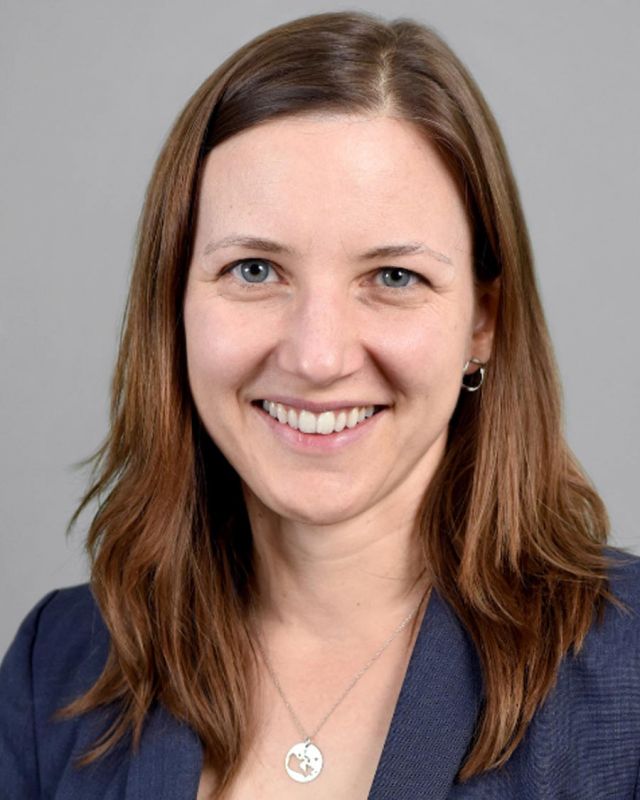Ethics in Geography
Geographers double down on commitment to ethics and equity as a new generation joins the field

By Harrison Tasoff
Thursday, May 5, 2022 - 05:00
Santa Barbara, CA
Geography may not appear to be a particularly contentious field of study, but its wide scope and long history present all sorts of ethical challenges. For instance, choosing what to include on a map — and how to represent it — reflects historical trends, social values, minority representation and more. The fact that it can sometimes be a tricky business has often slipped by geographers themselves.
But a new wave of researchers hopes to end this lapse. UC Santa Barbara geographers Trisalyn Nelson(link is external) and Michael Goodchild(link is external) are working to better integrate ethics into their field. The two faculty members recently teamed up with UCSB alumna Dawn Wright, Esri’s chief scientist and a recently elected member of the National Academy of Sciences, to discuss how geographers can best promote ethics, empathy and equity in spatial data science, often referred to as GIScience.
Their research, published in the Proceedings of the National Academy of Sciences(link is external), highlights ways in which geographers can help accelerate the inclusion of those things in their field. With ideas such as addressing issues with data privacy and designing diverse teams, they hope to help foster a generation of spatial data scientists that can address big societal problems and shape spatial planning and decision-making to better the world.
“In GIS we have a long tradition of evaluating the quality of each other’s work,” Nelson said. “We really care about doing accurate and quality research. But I think we’ve entered a time where we also need to start talking about ensuring we are doing ethical research.”
Spatial data is ubiquitous, from GPS-connected smartphones to satellite images online. As a result, spatial data science has become an interdisciplinary tool for science and society. Yet ethical guidelines for using this data have not kept pace with technological developments. Geographers — who have wrestled with the ethical implications of maps in the past — are now leading dialogues on standards for data use to ensure that detailed locational data is protected and anonymized to safeguard user privacy.
The authors also tackle equity, both in the applications of GIScience as well as who is included in its development and use. “The time is past for waiting for [science] to diversify itself,” the authors write. “There must be a more intentional building of teams that will support the training of more diverse people, which means seeking out diverse team members.”
One solution the authors suggest is to shift spatial data science toward open-access. Removing barriers to accessing spatial data will enable more people to explore spatial trends and expose spatial inequities.
Spatial data scientists also need to find ways to close the information gaps that come from using big data sources. Conducting research exclusively using cell phone data, for example, leaves out large swaths of society, like children, older adults and people experiencing homelessness. The authors encourage scientists to take steps to ensure data are inclusive through techniques like data integration and modeling.
In addition to making data as representative as possible, the authors argue that the GIS community needs to create a framework to identify, measure and communicate the bias in spatial data. They suggest that researchers focus on building a consistent way to document missing data and talk about how data biases impact research findings by making them less generalizable.
Many compelling discoveries in spatial analysis are the result of inferences based on data that was gathered at just one point in time. It’s wise to be cautious when making inferences from non-representative data, which could support a range of different conclusions. The authors recommend investigating all the possible inferences before making a determination.
Nelson and Goodchild say that GIS can also be used as a tool to support equitable and inclusive design and decision making. It has a unique ability to represent and analyze spatial differences that stem from racism, housing and income inequality such as community policing, access to public transit, food deserts and other social justice issues. In their paper, they advocate for the use of GIS to analyze and expose these spatial inequalities, and stress the importance of including the people being impacted in the research and decision-making process.
Geography today is a larger, more vibrant field than it has ever been, with GIS-based apps and dashboards helping millions of people every day. The burgeoning availability of spatial data has coincided with a widespread recognition of the value of social justice research. Now, the researchers argue, geospatial scientists must accelerate collaboration with the communities they study and promote equity in their field.
The authors hope spatial data science can set a standard for using ethics, empathy and equity across science. “UCSB is an international powerhouse when it comes to spatial data science,” Nelson said, “so it is important that we also lead in ethical use of the technology and science.”
Contact Info:
Harrison Tasoff
(805) 893-7220
harrisontasoff@ucsb.edu